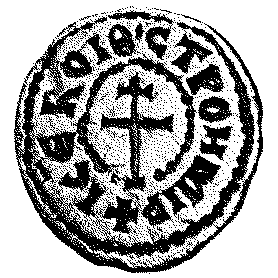 W
WThe Vlastimirović was the first Serbian royal dynasty, named after Prince Vlastimir, who was recognized by the Byzantine Empire. The dynasty was established with the Unknown Archont, who ruled during the reign of Emperor Heraclius (610–641). The Vlastimirović dynasty ruled in Serbia until the 960s, when some Serbian lands were annexed by the Byzantine Empire.
 W
WČaslav was Prince of the Serbs from c. 927 until his death in c. 960. He significantly expanded the Serbian Principality when he managed to unite several Slavic tribes, stretching his realm over the shores of the Adriatic Sea, the Sava river and the Morava valley. He successfully fought off the Magyars, who had crossed the Carpathians and ravaged Central Europe, when they invaded Bosnia. Časlav is remembered, alongside his predecessor Vlastimir, as founders of Serbia in the Middle Ages.
 W
WThe Serbian Orthodox Church is one of the autocephalous Eastern Orthodox Christian churches. It is the second-oldest Slavic Orthodox Church in the world.
 W
WEparchy of Raška and Prizren or Eparchy of Raška-Prizren and Kosovo-Metohija, is one of the oldest eparchies of the Serbian Orthodox Church, featuring the seat of the Serbian Orthodox Church, the Serbian Patriarchal Monastery of Peć, as well as Serbian Orthodox Monastery of Visoki Dečani, which together are part of the UNESCO World Heritage sites of Serbia.
 W
WGojnik Vlastimirović or Gojnik of Serbia was a Serbian Župan who was subject to his elder brother Mutimir, the Grand Župan of the Serbian lands (Rascia) from ca. 850-860 with his brother Strojimir. He was the youngest son of Vlastimir of Serbia, the first independent ruler of Rascia.
 W
WPavle Branovic was the Prince of the Serbs from 917 to 921. He was put on the throne by the Bulgarian Tsar Symeon I of Bulgaria, who had imprisoned the previous prince, Petar, after he had become a Byzantine ally. Pavle ruled for four years, before being defeated by Zaharija, his cousin. Pavle was the son of Bran, the middle son of Mutimir of the Vlastimirović dynasty.
 W
WPetar Gojniković or Peter of Serbia was Prince of the Serbs from 892 to 917. He ruled and expanded the First Serbian Principality (Rascia), and won several wars against other family members that sought the crown. He was the first Serbian monarch with a Christian (non-Slavic) name.
 W
WStrojimir was the co-ruler of the Serbian Principality alongside his two brothers Mutimir and Gojnik, from ca 851 to his and Gojnik's deposition in the 880s after an unsuccessful coup against the eldest Prince Mutimir.
 W
WVišeslav or Vojislav, is the first Serbian ruler known by name, who ruled in c. 780. Serbia was a Slavic principality, subject to the Byzantine Empire, located in the western Balkans, bordering with Bulgaria in the east. Mentioned in the De Administrando Imperio (DAI) from the mid-10th century, Višeslav was a progenitor of the Serbian ruling family, known in historiography as the Vlastimirović dynasty. He was descended from the unnamed "Serbian prince" who led his people to the Dalmatia province and established hereditary rule under Byzantine suzerainty. The names of Višeslav's predecessors were not included in the DAI. The dynasty ruled the Principality of Serbia from the early 7th century until around 960.
 W
WVlastimir was the Serbian prince from c. 830 until c. 851. Little is known of his reign. He held Serbia during the growing threat posed by the neighbouring, hitherto peaceful, Bulgarian Khanate, which had expanded significantly toward Serbia.
 W
WZaharija Pribislavljević or Zaharija of Serbia was Prince of the Serbs from 922 to 924. He defeated his cousin Pavle in 922. Zaharija was the son of Pribislav, the eldest son of Mutimir of the first Serbian dynasty.